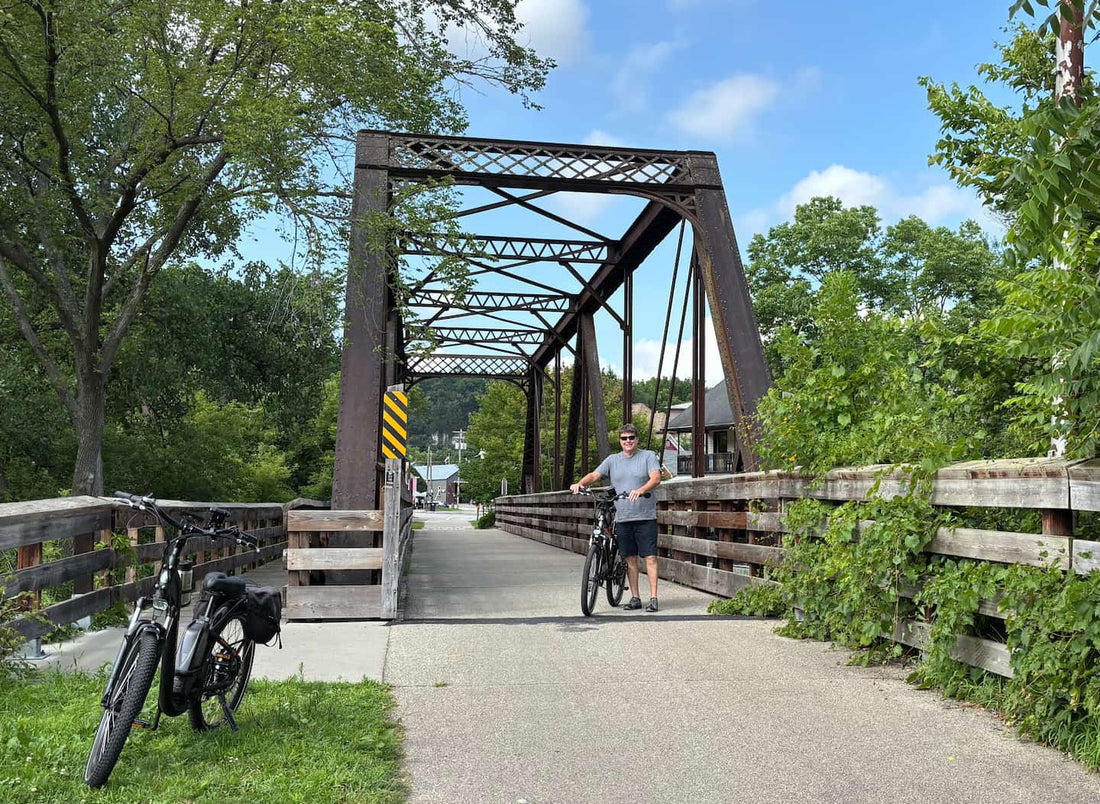
Part 5: Manufacturer and First Prototypes
Share
Manufacturer and First Prototypes

After reaching out to several U.S. distributors and manufacturers without success, I tried a different approach. I went looking for the factory that built the adjustable seat that was close to my vision.
With help from a friend in manufacturing, I got a contact at Huge Oaks in China, the factory that made that seat. I reached out, they wrote back, and they were willing to explore my design.

Jack pauses at a scenic bridge during a test ride of the adjustable-width bike seat.
For the next two months we emailed almost every day. We swapped drawings and measurements and kept the idea simple: use their seat halves with synthetic leather and memory foam and add my spring plunger technology so a rider can change width quickly with no tools, without taking the seat off the bike.
That was the goal from the start. Quick to adjust. Easy to live with. Built for real rides.
We received three prototypes on July 7, 2025. I put one on my e-bike, one on my wife Anita’s e-bike, and kept one for demos to shops and riders I met on the trail. On July 8 I did my first 36-mile test ride. By the end of August I had logged more than 500 miles on my prototype.

Jack with the Quick Set adjustable-width bike seat prototype during more than 500 miles of road testing.
I had three simple objectives:
- Structural integrity. Make sure the seat holds up under real riding.
- Ease of adjustment. The width change should be quick and straightforward.
- Pain relief on the ride. Changing width during a ride should help with pressure and comfort.
Those prototypes let me test all three. They also gave me confidence that the quick-adjust idea could work the way I pictured it—on the bike, in the moment, without tools.